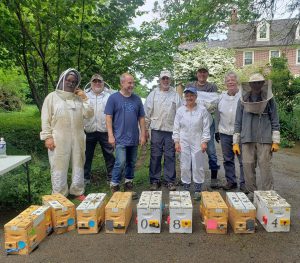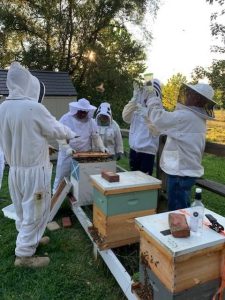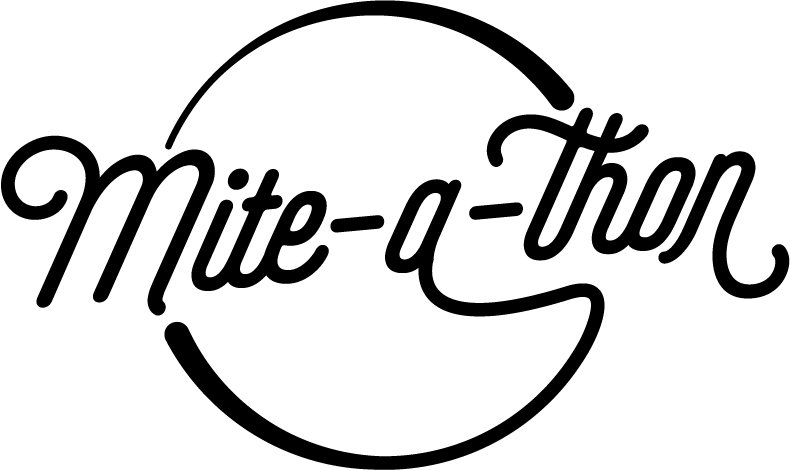The Mite-A-Thon is a Conversation that is Keeping Colonies Healthier and Overwintering Stronger
By: Savannah Christiansen (Pollinator Partnership), Anne Marie Fauvel (Bee Informed Partnership) & Nathalie Steinhauer (Bee Informed Partnership)
Bee Informed Partnership (BIP) is fond of collaborating with beekeepers, organizations and institutions. These collaborations are a kind of superpower, a great way to come up with ideas, support and implement them always with the goal of generating more impact. BIP’s collaboration with the Pollinator Partnership is one such example.
Pollinator Partnership is the largest organization dedicated exclusively to the conservation, education and research of pollinating animals and their habitats. Founded in 1997, their team of staff scientists has conducted numerous research studies on key questions and concerns in land management, agriculture and wildland conservation. With this science-based understanding at the forefront of their work, Pollinator Partnership has been cognizant of threats facing honey bees for many years including the impacts of the Varroa destructor mite on colony health. In order to spread awareness about monitoring for the Varroa mite, Pollinator Partnership got together with the MiteCheck team, including the Bee Informed Partnership, University of Maryland, University of Minnesota and Michigan State University to launch the North American Mite-A-Thon beginning in 2017. The group worked together to identify key priorities, gaps in knowledge and logistics for a continent-wide education, awareness and data collection campaign around monitoring hives for mite levels.
The Mite-a-thon is now an established, tri-national citizen science effort between Canada, the United States and Mexico to collect Varroa destructor infestation data in honey bee colonies. During two weeks in the Spring and another two in the Fall, beekeepers are encouraged to test for the number of mites in their hives using two common methods for monitoring (alcohol wash or powdered sugar roll) and upload that data into a website and app called Mitecheck to be compiled and analyzed. While Mite-A-Thon is not meant to be a rigorous scientific study, this citizen science project is meant to educate beekeepers, particularly non-commercial beekeepers, about effective monitoring methods for Varroa as part of overall colony health. Through participation, beekeepers also learn about different management practices from one of the many treatments available to no treatment at all. That said, Mite-A-Thon doesn’t take any one point-of-view on management practices, that is up to each individual beekeeper.
Now in its sixth year, the Mite-A-Thon has reached an estimated 2,570 unique participants and tested 1,018 colonies since its inception in 2017. Over the years, Mite-a-Thon has seen more beekeepers answering the question about management practices, which may have contributed to participants being more aware about treatment methods. As for longer-term survival, the level of Varroa destructor infestation at the end of the season is a pretty good indicator of overwintering losses. Though it is just one of the factors that can influence overwintering survival, it is really important to help beekeepers have an idea of what lies ahead based on their late season infestation levels. That said, each year has seen a high percentage of new participants, revealing that, beekeepers gain new knowledge and skills they can use towards maintaining colony health. Mite-A-Thon has also provided a platform for beekeeping associations to engage new members in their organizations and reconnect with long-time members to re-familiarize them with proper Varroa monitoring techniques.
This year the Mite-A-Thon is continuing with another two sessions for Varroa monitoring. One took place in the Spring, from April 30 – May 15, 2022 and the second will take place in the Fall, from August 13 – August 28, 2022. This August, all beekeepers in North America are encouraged to participate. You can do so by using either the powdered sugar roll or alcohol wash method to record the number of mites in each colony you test and upload those results to www.mitecheck.com. The more participants, the more data available for Pollinator Partnership and its partners to use in their work towards the protection of honey bees, along with growing a stronger network for beekeepers to connect and share information.
The Pollinator Partnership and Bee Informed Partnership invite YOU to collaborate and participate in the 2022 Mite-A-Thon this month. On your mark, get set, mitecheck!

The Chester County Beekeepers Association, a group which helped propel Pennsylvania into the state with most participants in 2020, poses with their hives after the Mite-A-Thon.
Photo credit: Chester County Beekeepers Association

Members of the Chester County Beekeepers Association begin the testing process to monitor for Varroa mites in their honey bee colonies. Photo credit: Chester County Beekeepers Association









